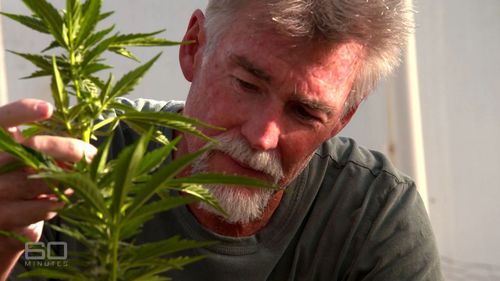

“Olivia Newton-John: ‘Medicinal cannabis enhanced my quality of life’. For this special 60 Minutes report, Olivia Newton-John tells Liz Hayes that despite her latest diagnosis she was “getting strong again” and that her quality of life had been greatly enhanced by medicinal cannabis, grown for her by her husband John. Olivia and John are strong believers in the power of plants particularly cannabis. “I really believe the cannabis has made a huge difference,” says Olivia. “I’m confident,” John concurs. Olivia, John and Chloe are now cannabis converts, and now want medicinal cannabis legalised as an alternative treatment in Australia.” https://www.9news.com.au/national/olivia-newton-john-60-minutes-medical-cannabis-advocate-after-cancer-treatment-news/da315271-7387-47e0-a14e-c7fbb9a4b18b
“I have to credit again my wonderful husband because he gives me Cannabis oil that he makes for me, grows the plants here. We’re so lucky in California that we can grow our own, and so he’s made me these incredible tinctures that help with my pain and with sleep, and everything.” https://www.today.com/


 “Fragile X syndrome (FXS) is characterized by a range of developmental, neuropsychiatric, and behavioral symptoms that cause significant impairment in those with the disorder.
“Fragile X syndrome (FXS) is characterized by a range of developmental, neuropsychiatric, and behavioral symptoms that cause significant impairment in those with the disorder. “β-caryophyllene (BCP) is a cannabinoid receptor 2 (CB2) agonist that tempers inflammation.
“β-caryophyllene (BCP) is a cannabinoid receptor 2 (CB2) agonist that tempers inflammation. “Obese individuals are more likely to show insulin resistance (IR). However, limited population studies on
“Obese individuals are more likely to show insulin resistance (IR). However, limited population studies on 
 “The therapeutic effect of
“The therapeutic effect of  “Cannabichromene (CBC) is one of the most abundant phytocannabinoids in Cannabis spp. It has modest anti-nociceptive and anti-inflammatory effects and potentiates some effects of Δ9 – tetrahydrocannabinol (THC) in vivo. How CBC exerts these effects is poorly defined and there is little information about its efficacy at cannabinoid receptors. We sought to determine the functional activity of CBC at CB1 and CB2 receptors.
“Cannabichromene (CBC) is one of the most abundant phytocannabinoids in Cannabis spp. It has modest anti-nociceptive and anti-inflammatory effects and potentiates some effects of Δ9 – tetrahydrocannabinol (THC) in vivo. How CBC exerts these effects is poorly defined and there is little information about its efficacy at cannabinoid receptors. We sought to determine the functional activity of CBC at CB1 and CB2 receptors. “Utilization and safety of
“Utilization and safety of  “Currently, a combination of marijuana cannabinoids including delta-9-tetrahydrocannabinol (THC) and
“Currently, a combination of marijuana cannabinoids including delta-9-tetrahydrocannabinol (THC) and